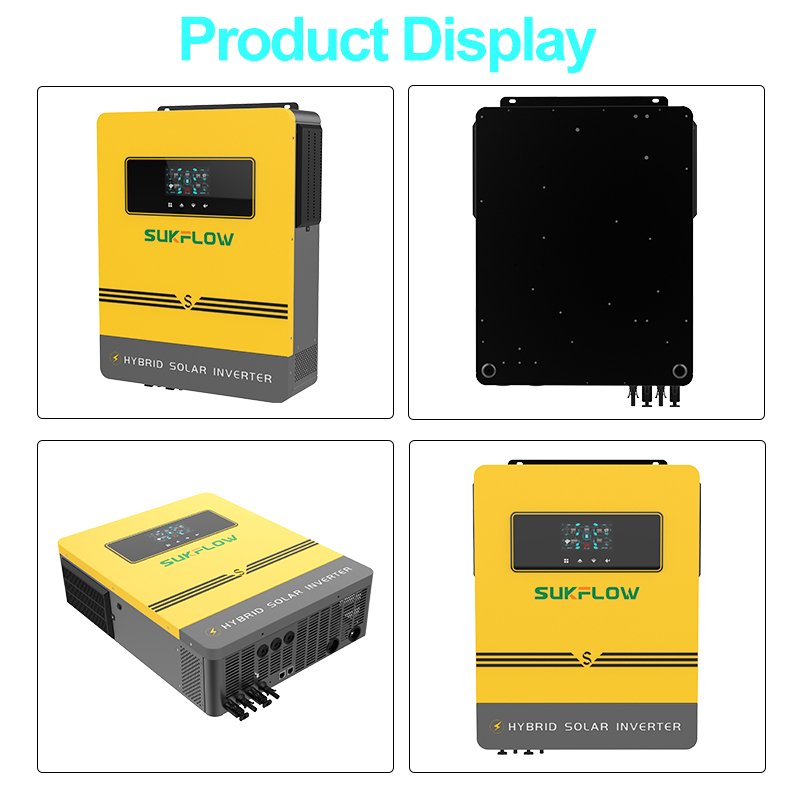Off-Grid Inverters: Powering Independence with Renewable Energy
Introduction
In an era where energy independence and sustainability are becoming increasingly important, off-grid inverters play a crucial role in enabling self-sufficient power systems. Whether you’re living in a remote location, preparing for emergencies, or simply aiming to reduce reliance on the grid, off-grid inverters provide a reliable way to convert and store solar or battery power for everyday use.
In this article, we’ll explore what off-grid inverters are, how they work, and why they might be the perfect solution for your energy needs.
What Is an Off-Grid Inverter?
An off-grid inverter (also known as a stand-alone inverter) is a device that converts DC (direct current) electricity from solar panels or batteries into AC (alternating current) for household or commercial use—without needing a connection to the public power grid.
Unlike grid-tied inverters, which shut down during power outages, off-grid inverters work independently, making them ideal for:
- Remote homes & cabins
- RVs and boats
- Emergency backup power
- Sustainable living projects
How Do Off-Grid Inverters Work?
- Energy Source – Solar panels or wind turbines generate DC electricity, which is stored in batteries.
- Battery Storage – Deep-cycle batteries (like lithium-ion or lead-acid) store the energy for later use.
- Power Conversion – The off-grid inverter converts the stored DC power into usable AC power (120V/230V).
- Power Distribution – The AC electricity powers household appliances, lighting, and other devices.
Since off-grid systems are not connected to the utility grid, they often include charge controllers to regulate battery charging and prevent overcharging.
Key Features of Off-Grid Inverters
✅ Pure Sine Wave Output – Provides clean, stable power for sensitive electronics (e.g., laptops, medical devices).
✅ Battery Compatibility – Works with various battery types (lithium, lead-acid, gel).
✅ High Efficiency – Minimizes energy loss during conversion.
✅ Scalability – Can be expanded with more solar panels and batteries.
✅ Backup Power Ready – Ensures uninterrupted power during outages.
Off-Grid vs. Grid-Tied vs. Hybrid Inverters
| Feature | Off-Grid Inverter | Grid-Tied Inverter | Hybrid Inverter |
|---|---|---|---|
| Grid Connection | No | Yes | Yes (with battery backup) |
| Battery Required | Yes | No | Optional |
| Works During Blackouts? | Yes | No | Yes (if battery is installed) |
| Best For | Remote locations, backup power | Reducing electricity bills | Grid + battery backup |
Choosing the Right Off-Grid Inverter
When selecting an off-grid inverter, consider:
🔹 Power Output (Wattage) – Match the inverter’s capacity to your energy needs.
🔹 Battery Voltage (12V, 24V, 48V) – Higher voltage = lower current = less energy loss.
🔹 Waveform (Pure Sine Wave vs. Modified Sine Wave) – Pure sine wave is better for sensitive electronics.
🔹 Efficiency Rating – Look for >90% efficiency.
🔹 Expandability – Can you add more batteries or solar panels later?
Top Applications of Off-Grid Inverters
- Remote Homes & Cabins – No grid access? No problem!
- Emergency Backup Power – Keep essentials running during outages.
- RV & Marine Use – Power your adventures off the grid.
- Agricultural & Industrial Sites – Reliable power for pumps, tools, and equipment.
Conclusion
Off-grid inverters are the backbone of independent energy systems, providing reliable electricity where traditional power sources are unavailable. Whether you’re looking for a sustainable lifestyle, emergency preparedness, or remote power solutions, an off-grid inverter ensures you stay powered—anytime, anywhere.
Ready to go off-grid? Explore our range of high-efficiency inverters today!
Would you like any modifications, such as brand comparisons or installation tips? Let me know how I can tailor this further for your audience!

